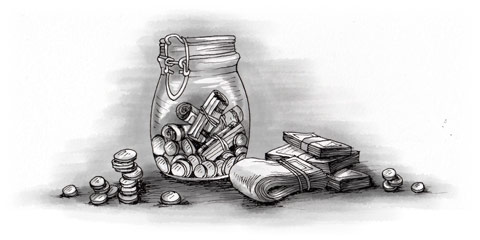Coins are minted in values of 1, 2, 5, 10, 20 and 50 cents, and R1, R2 and R5. Notes are printed in denominations of R10, R20, R50, R100 and R200. The designs of South Africa’s currency reflect the country’s diverse fauna. The coins depict wildlife, mainly antelope and birds, and the notes have pictures of the ‘big five’ wild animals (i.e. those that most tourists want to see): a rhino on the R10 note (which is green), an elephant on the R20 note (brown), a lion on the R50 (red), a buffalo on the R100 (blue) and a leopard on the R200 (orange).
There are two types of R2 and R5 coins currently in circulation, as a new design was released in August 2004 to mark ten years of South African democracy. The new R2 coin is virtually identical to the old one, but the new R5, the first bi-metal coin in South Africa, has an edged ‘security’ groove and is slightly heavier than the old coin.
If possible, it’s wise to obtain some rand coins and banknotes before arriving in South Africa and to familiarise yourself with them. Bringing some rand with you will save you having to change money on arrival at a South African airport (where exchange rates are poor). It’s sensible not to carry a lot of cash and ideally you should avoid high value notes (R100 and R200), which aren’t widely accepted, particularly for small purchases or on public transport (R200 notes are occasionally forged). Beware of short-changing, which is common in some areas (always check your change, particularly when tendering a large note).



